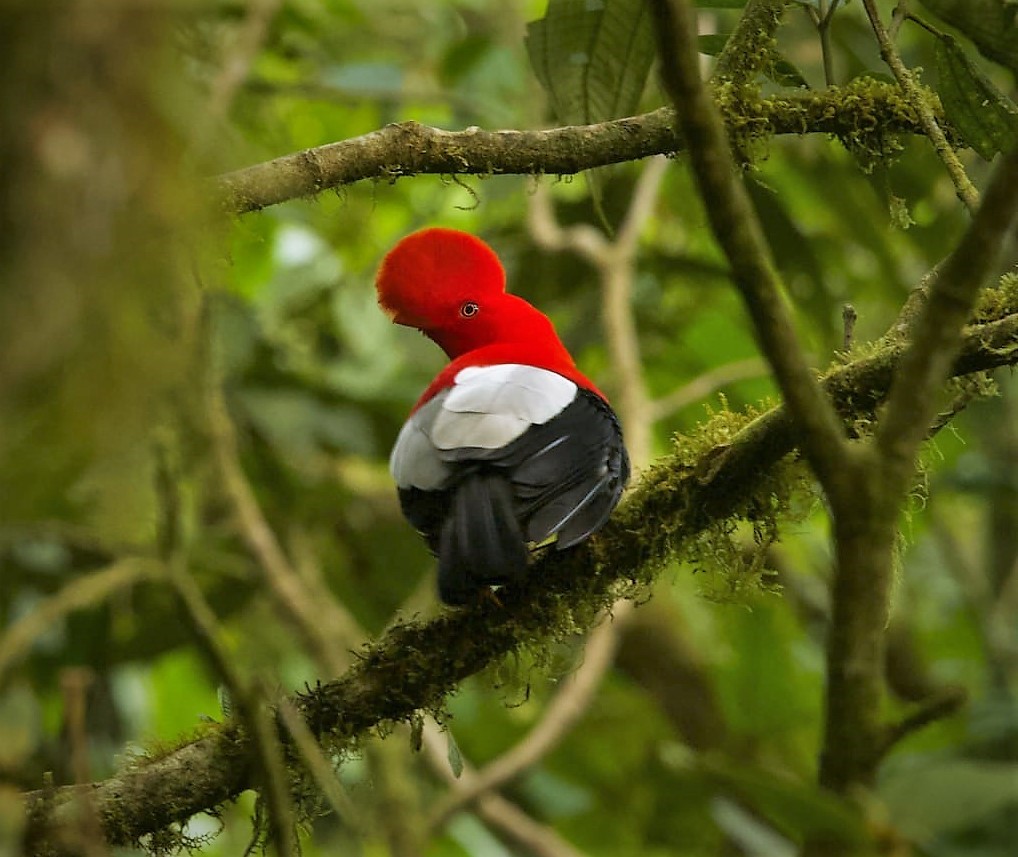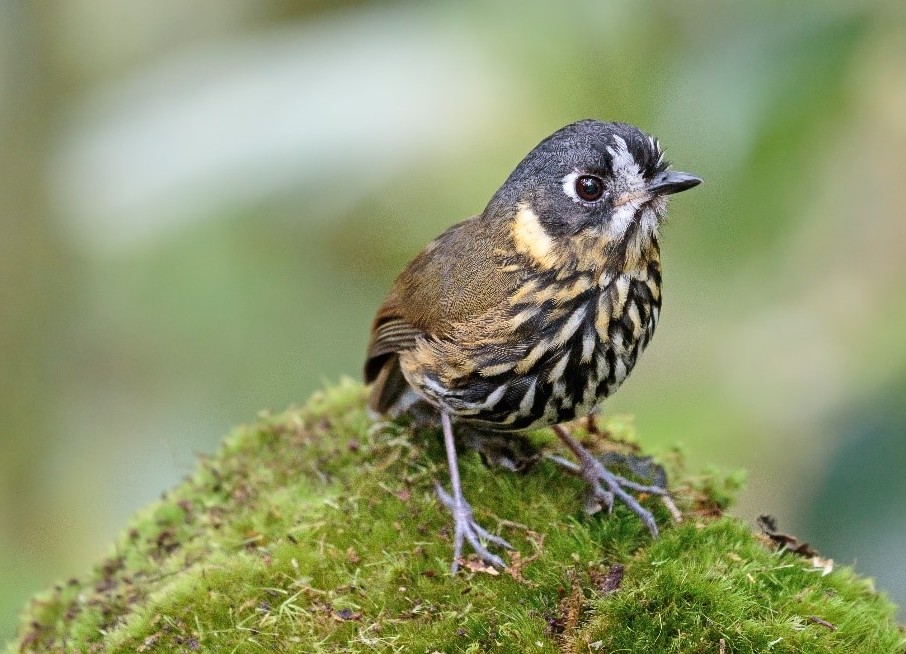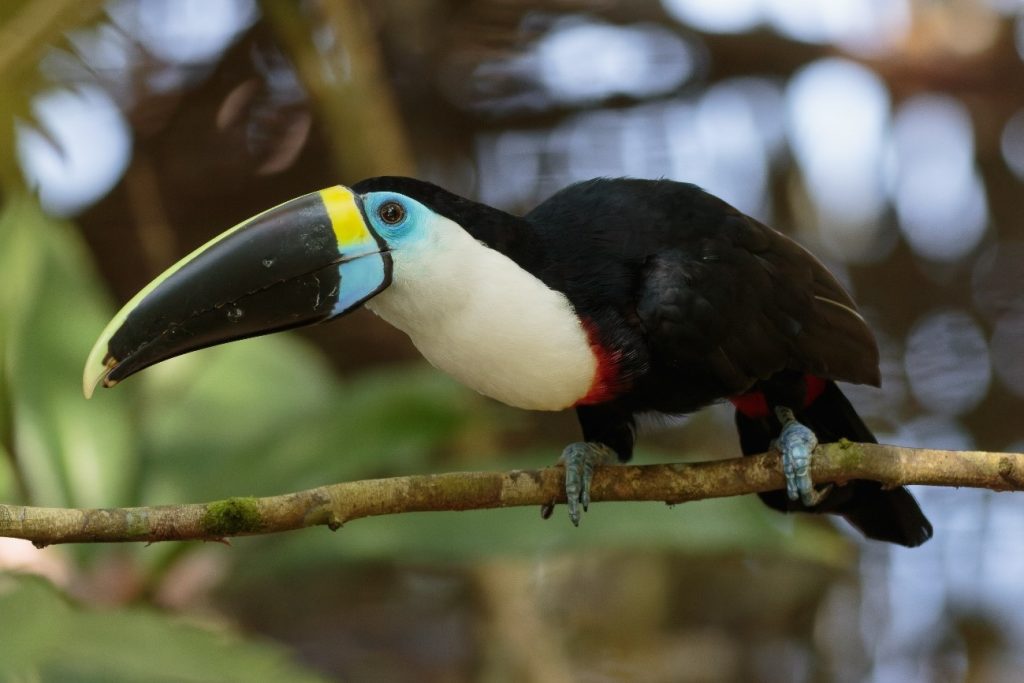Colombia has 1910 bird species, according to the latest checklist following the South American Checklist Committee, which is more birds than any other country in the world and a number that is growing every year though new discoveries and range extensions.

In addition to the Hilty fieldguide the excellent two volume Guide to the Birds of Northern South America provides a comprehensive coverage.
With the great improvement in the security situation more than a decade ago, many areas of the country are now stable and safe for birders to return. However still very few birders have seen such legendary critically endangered birds as the Blue-billed Curassow, Gorgeted Wood-Quail, Chestnut-bellied Hummingbird, Colombian Mountain Grackle, Recurve-billed Bushbird, Yellow-eared parrot, Santa Marta Parakeet, Fuertes’s Parrot and Dusky Starfrontlet.

Fortunately, due to the conservation efforts of Fundación ProAves, all these and many more endangered species are now protected by a growing network of nature reserves, which offer good accommodation and facilities for researchers and visiting birders.
Whilst Colombia’s dangerous reputation is now to some extent unjustified, for example kidnappings are more prevalent in countries like Mexico, Brazil and Venezuela, one should never be complacent, as the guerrilla presence remains in some remote areas, particularly the coca-growing lowlands of the Colombian Amazon. As with other Latin American countries, avoid travelling overnight. The British Foreign and Commonwealth office website provides a good starting point for up to date security advice, but some ‘general area’ warnings cover safe areas, for example Ocaña in Norte de Santander (for Recurve-billed Bushbird). We strongly recommend that anyone wishing to wish Colombia work with tour operators, or organizations such as ProAves that have up to date local knowledge for specific areas.

Colombians are extremely hospitable towards foreigners and they will make certain that your impression of their beautiful country is something different to what is often presented in the international press. Unfortunately, facilities in many reserves and national parks are often rustic owing to the lack of ecotourism in recent decades. However, this is changing as exemplified by the luxury of the scenic El Dorado bird reserve in the endemic rich Santa Marta area, where 17 (at least) endemics can be found, many of them with little difficulty.
There are still some good areas in the vicinity of Bogotá, especially the marshes near the airport with the key birds being Bogotá Rail and Apolinar’s Wren, and an area below Chingaza NP where the Flame-winged Parakeet can be seen.

The Cerulean Warbler bird reserve in Santander is more interesting for the Gorgeted Wood-Quail, White-mantled Barbet and Black Inca. For lowland species in the Magdalena Valley the Paujíl reserve is recommended for the Blue-billed Curassow as well as less elusive species such as Sooty Ant-Tanager and Beautiful Woodpecker. For the more energetic birder the eponymous Dusky Starfrontlet and Chesnut-capped Piha bird reserves, or the spectacular Mirador reserve where Fuertes’s Parrot was rediscovered in 2002, all involve some good hiking or the use of horses. Many areas in the south of Colombia are still problematical, but the large Pangan bird reserve in Nariño contains many endemics such as Chocó Vireo as well as others such as Long-wattled Umbrellabird and Banded Ground-Cuckoo whose ranges straddle the border with Ecuador.
Colombia is a must for any serious birder though a single trip can only hope to sample its extraordinary biodiversity.
Top Birding Site:
Sierra Nevada de Santa Marta (Map)
Sierra Nevada de Santa Marta is completely isolated from the Andes Mountains. It is a Biosphere Reserve and a National Park, overlooking the Caribbean coast of northern Colombia. With only 1.48% of the national territory, Sierra Nevada de Santa Marta nevertheless has 635 bird species – 35% of the whole Colombia. Although smaller than the state of Connecticut (US), Sierra Nevada de Santa Marta contains the single highest concentration of endemic bird species (36) found on the planet and more resident bird species than the continental USA! 18 of the species are facing a risk of extinction at a global level.
Birding
Birdwatching is carried out entering from Santa Marta to Minca and then to El Dorado Reserve in the Sierra Nevada de Santa Marta, where most of the endemics can be spotted, such as: Santa Marta Sabrewing Campylopterus phainopeplus (Rare, Endemic & Endangered), Santa Marta Parakeet Pyrrhura viridicata (Endemic & Endangered), Santa Marta Bush-Tyrant Myiotheretes pernix (Endemic & Endangered), Santa Marta Mountain-Tanager Anisognathu smelanogenys (Endemic), Santa Marta Brush-Finch Atlapete smelanocephalus (Endemic), Santa Marta Warbler Basileuterus basilicas (Endemic & Vulnerable (among others).

Other birds non-endemic birds include: White-tipped Quetzal Pharomachrus fulgidus, Blue-naped Chlorophonia Chlorophonia cyanea and White-sided Flowerpiercer Diglossa albilatera.
How to get there: From Bogota, there are direct short flights (1.5hr) to Santa Marta, the nearest big town. To reach the El Dorado Reserve, we pass through Minca 30 minutes from Santa Marta, where a lot of birds can be seen of different species. The Reserve lies between 1100m – 2700m. The way to go there is a bit difficult and a 4X4 is definitely needed, the track being in very bad conditions, from Minca, it takes 1.5hr for a good driver to reach the El Dorado Lodge (20km). The lodge has a beautiful panoramic view on Santa Marta, overall at sunset, it is located in a magnificent garden filled of flowers attracting a lot of birds (mainly Hummingbirds) and it is the place for Santa Marta Sabrewing. From the lodge, it is recommended to drive to the top of the mountain, it takes one hour to drive 6km, but it is worth leaving at 05.00 am to see the sunrise, the view of the Sierra with palm trees above the clouds is exceptional. The track between El Dorado Lodge and the top is also the best place to find most of the Santa Marta endangered birds.
Major Source: Fatbirder
Map Source: Googlemaps™
Photo Source:
